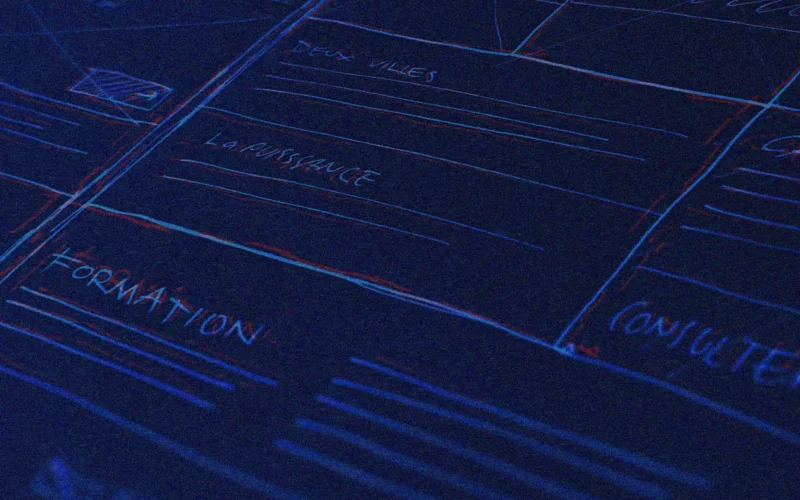What is UI design? What is UX design? UI vs UX: What is the difference?
Learn more about the difference between user interface (UI) design and user experience (UX) design.
User interface design and UX design are two of the most confusing and conflated terms in web and application design. And understandably so. They are usually placed together in a single term, UI / UX design, and at first glance, they seem to describe the same thing. It is often difficult to find solid descriptions of the two that do not descend too far into jargon. But fear not!
What is UI Design?
“User interface” in user interface design means “user interface”. The user interface is the graphic design of an application. It consists of the buttons that users click, the text they read, images, sliders, text input fields and all other elements with which the user interacts. This includes the screen layout, transitions, interface animations and each of the micro-interactions. Any type of visual element, interaction or animation must be designed.
This job falls to the UI designers. They decide how the application will look. They should choose color combinations and button shapes: the width of the lines and the fonts used for the text. UI designers create the look and feel of an application’s user interface.
User interface design process by Ramotion
UI designers are graphic designers. They are concerned about aesthetics. It is up to them to make sure that the application interface is attractive, visually stimulating and themed to match the purpose and/or personality of the application. And they need to make sure that each visual element feels cohesive, both aesthetically and in function.
What is UX Design?
“UX” stands for “user experience.” A user’s experience with the application is determined by how they interact with it.Is the experience smooth and intuitive or clunky and confusing? Does navigating the application feel logical or arbitrary? Does interacting with the application give people the feeling that they are efficiently accomplishing the tasks they set out to achieve or does it feel like a struggle?The user experience is determined by how easy or difficult it is to interact with the UI elements that the UI designers have created.
So, UX designers also care about the user interface of an application, and that’s why people get confused about the difference between the two. But while UI designers are tasked with deciding how the user interface will look, UX designers are in charge of determining how the user interface works.
Determine the interface structure and functionality. How it is organized and how all the parts relate to each other. In short, they design how the interface works. If it works well and feels perfect, the user will have a good experience. But if navigation is complicated or unintuitive, the user experience is likely to be lousy. UX designers work to avoid the second scenario.
Designing in a vacuum leads to less than ideal results.
There is also a certain amount of iterative analysis involved in UX design. UX designers will create a wireframe representation of your interface interactions and get feedback from users. They will integrate this into their designs. It is important for UX designers to have a holistic understanding of how users prefer to interact with their applications.
How they work together
So, a UX designer decides how the user interface works, while the UI designer decides how the user interface looks. This is a very collaborative process and the two design teams offer to work closely together. As the UX team is working on the flow of the application, how all the buttons take you through your tasks and how the interface efficiently serves the information the user needs, the UI team is working on how all these interface elements will appear. on the screen.
Let’s say that at some point in the design process it is decided that additional buttons need to be added to a given screen. This will change the way the buttons should be arranged and may require changing their shape or size. The UX team would determine the best way to distribute the buttons, while the UI teams adapt their layouts to fit the new design. Constant communication and collaboration between UI and UX designers helps ensure that the final user interface looks its best, while functioning efficiently and intuitively.
Research is key
Research is vital for UI and UX designers. It is important for both disciplines to gather as much good information as possible to help them develop appropriate designs, and both follow a similar approach.
Both will investigate what users want. What do they expect from applications of the type being developed. This research is often iterative and includes usability sessions, where real users will interact with scaled versions of certain features or visual designs they are testing to determine if the designers are moving down the right path. Feedback is integrated with each iteration.
This process involves generating low-fidelity prototypes, such as wireframe representations of interface elements to evaluate a user’s response strictly to the function being tested. This may also involve rapid visual prototyping and A/B testing of different possible versions of the interface look and feel to determine which one users prefer.
In all cases, the research helps guide the steps designers take as they build their contributions. However, the information UI and UX designers are looking for is very different.
UI design research
UI designers must ensure that the visual language they choose fits the kind of application they are writing. They try to predict user expectations. If your team is designing a travel application, it is important to research how other travel applications have been developed in the past. Which ones worked? Which ones did not? There are design lessons to be learned from the work that others have done before.
Research may indicate that people prefer contoured icons over bold shapes. This is a visual shorthand that people are comfortable with and enjoy. UI designers would do well to incorporate that lesson.
The exact aesthetics they choose are up to them, but the basic “rules”, or the need to conform to user expectations, is something designers ignore at their peril.
Not to say that risks should not be taken. UI designers want their interface designs to stand out and be memorable. But this must be balanced with making sure that people recognize the purpose of the elements you are placing on the screen.
Research for UX design
UX design is particularly interested in user expectations. All the experiences and interactions users have had with every application they have used in their lives have helped set their expectations about how interfaces are supposed to work. If a UX designer is not intimately familiar with these expectations, they might inadvertently design an interface interaction that seems logical to them but breaks the usual accepted conventions. Users don’t like it when an interface behaves very differently from what they expected, and this could negatively affect their experience.
If a UX designer decides to do something different, he or she must have a very good reason, because breaking a deeply trained expected behavior will likely cause people to do the wrong thing more often than not.
For example, most people are comfortable with the idea of clicking twice on a file to open it and once to select it. This is an interface behavior that has existed almost as long as there have been graphical user interfaces.
UI vs.UX: two very different disciplines that work in harmony
UI design and UX design involve very different skill sets, but are integral to the success of each. A beautiful design cannot save an interface that is clumsy and confusing to navigate, and a brilliant and perfectly appropriate user experience can be sunk by a bad visual interface design that makes the application unpleasant to use. Both UI and UX designs must execute seamlessly and align perfectly with pre-existing user expectations to create an excellent user interface/user experience. And when those stars align, the results can be astounding.
After reading all this, if you need a hand with your project, don’t hesitate to contact us!






